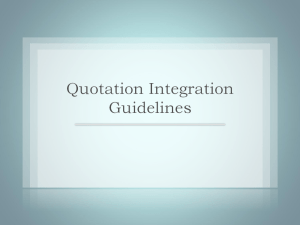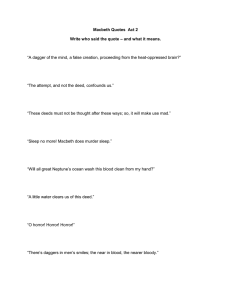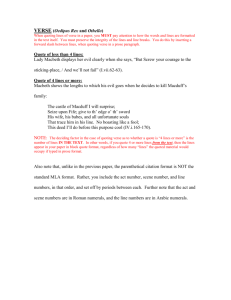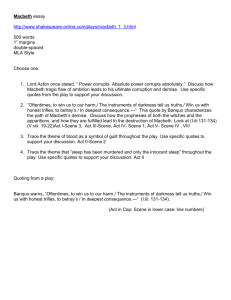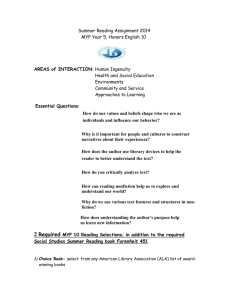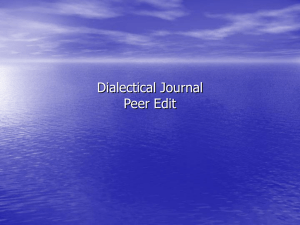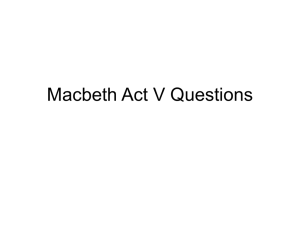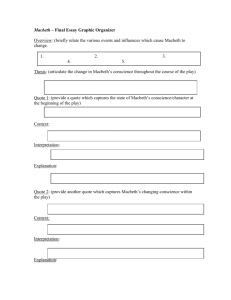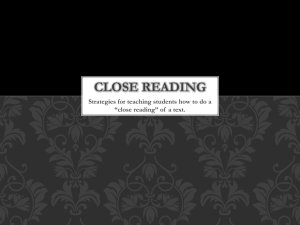Causal Argument Instructions Macbeth
advertisement
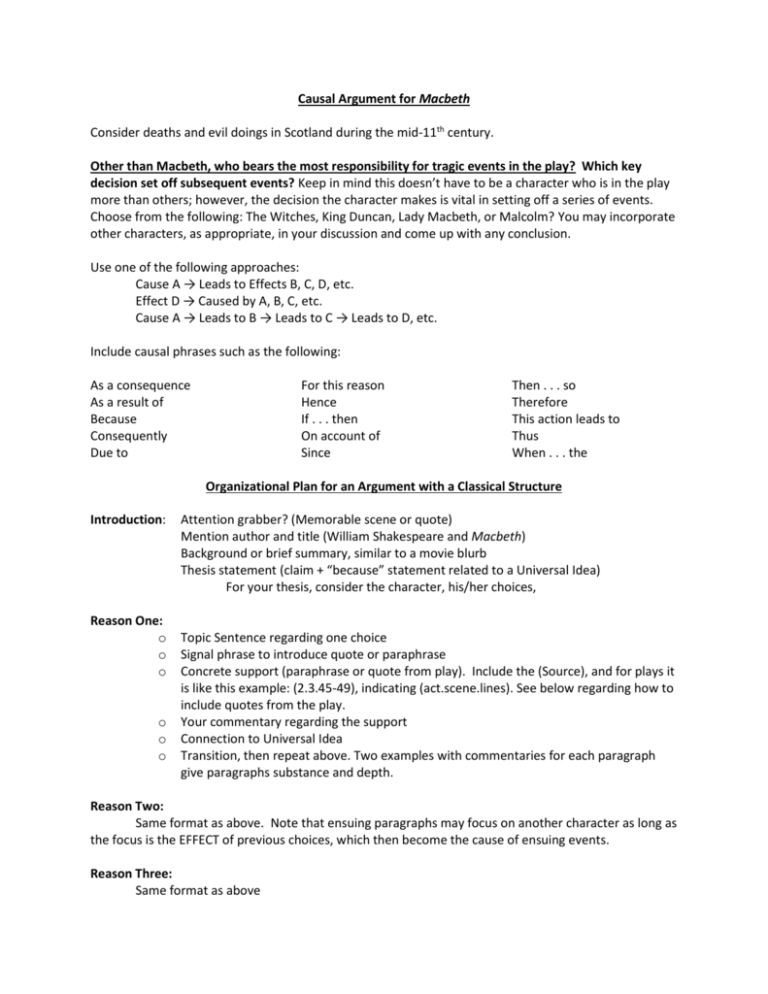
Causal Argument for Macbeth Consider deaths and evil doings in Scotland during the mid-11th century. Other than Macbeth, who bears the most responsibility for tragic events in the play? Which key decision set off subsequent events? Keep in mind this doesn’t have to be a character who is in the play more than others; however, the decision the character makes is vital in setting off a series of events. Choose from the following: The Witches, King Duncan, Lady Macbeth, or Malcolm? You may incorporate other characters, as appropriate, in your discussion and come up with any conclusion. Use one of the following approaches: Cause A → Leads to Effects B, C, D, etc. Effect D → Caused by A, B, C, etc. Cause A → Leads to B → Leads to C → Leads to D, etc. Include causal phrases such as the following: As a consequence As a result of Because Consequently Due to For this reason Hence If . . . then On account of Since Then . . . so Therefore This action leads to Thus When . . . the Organizational Plan for an Argument with a Classical Structure Introduction: Reason One: o o o o o o Attention grabber? (Memorable scene or quote) Mention author and title (William Shakespeare and Macbeth) Background or brief summary, similar to a movie blurb Thesis statement (claim + “because” statement related to a Universal Idea) For your thesis, consider the character, his/her choices, Topic Sentence regarding one choice Signal phrase to introduce quote or paraphrase Concrete support (paraphrase or quote from play). Include the (Source), and for plays it is like this example: (2.3.45-49), indicating (act.scene.lines). See below regarding how to include quotes from the play. Your commentary regarding the support Connection to Universal Idea Transition, then repeat above. Two examples with commentaries for each paragraph give paragraphs substance and depth. Reason Two: Same format as above. Note that ensuing paragraphs may focus on another character as long as the focus is the EFFECT of previous choices, which then become the cause of ensuing events. Reason Three: Same format as above Summary of Opposing Views: Should be fair (not biased) and complete One or two opposing views – two is better Response to Opposing Views: Refute (show weaknesses) or concede (show strengths) to opposing views Conclusion: Bring essay to closure and sum up argument (without repeating) Leave a strong last impression that ties back to Universal Idea Can close with narrative, quote, answer to previous question, etc. Works Cited: Cite the textbook, using Book/Anthology format Alphabetize entries Reverse indent. Use this method for quotes fewer than four lines, and note the quotation marks, slashes / and period after the (source). Introduce the quote using a brilliant signal phrase followed by the relevant quote, “The Prince of Cumberland! that is a step/ On which I must fall down, or else o'erleap,/ For in my way it lies” (act.scene.lines). Use hanging indent for quotes over four lines, and note that you don’t use quotation marks because indenting takes their place. Be sure to include the source on the following line. Cannot be ill, cannot be good: if ill, Why hath it given me earnest of success, Commencing in a truth? I am thane of Cawdor: If good, why do I yield to that suggestion Whose horrid image doth unfix my hair And make my seated heart knock at my ribs, Against the use of nature? Present fears Are less than horrible imaginings: My thought, whose murder yet is but fantastical, Shakes so my single state of man that function Is smother'd in surmise, and nothing is But what is not. (act.scene.lines) NOTES: Refer to authors using last name Use present tense with tags such as Smith claims. Use formal language No “says” or “talks about.” Use stronger tags. Use 3rd person such as people, individuals, they, etc. No 2nd person “you” in any form. Ever. No 1st person “I, me, my, mine, myself, we, our, ourselves
